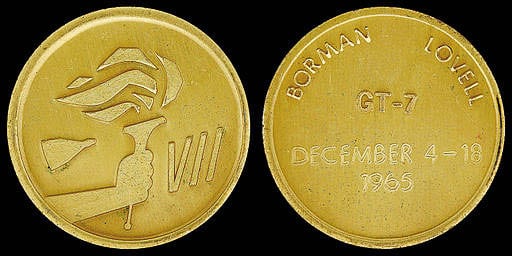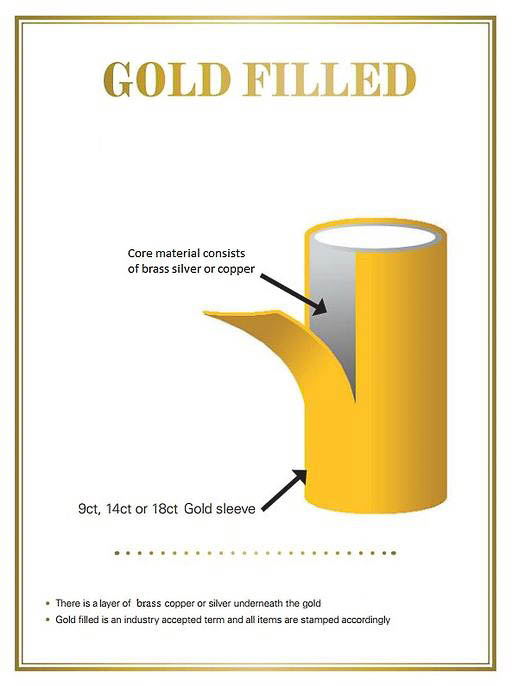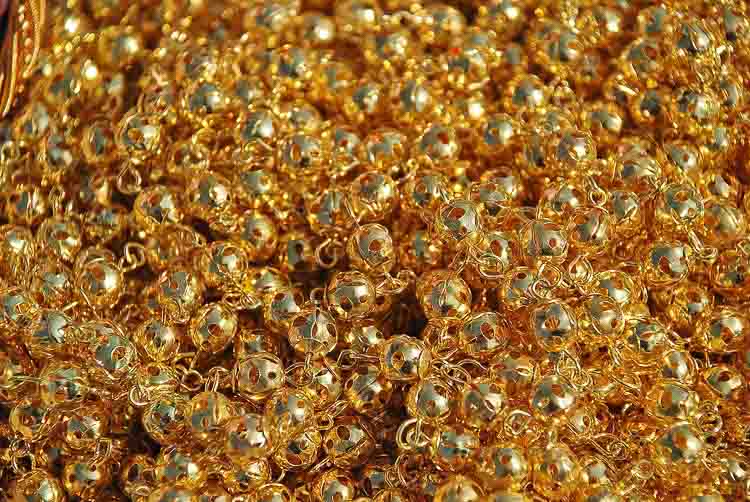So you’ve been hearing all these different terms being used and you do know that these are less expensive alternates to real gold. But after that it becomes a little hazy? Not to worry, here’s an explanation to these terms and types of gold jewellery.
Gold Plated

Gold plating is where a very thin layer of gold is added onto something called a base metal. This base metal is typically brass or steel to prevent nickel based allergies though copper and pewter are also used in a process of electroplating. In this case, the gold that’s applied is usually 18 or 22 Carat gold. The thickness of the gold plating varies from just 0.5micron to about 1-3microns. Remember that since a micron is a thousandth of a millimetre this is a very thin layer and it does tend to wear away slowly or quickly depending on the thickness. When it does, the base metal is revealed causing a dull or dark look. It’s possible to replate the item, but usually cheaper to simply buy a new piece all together because of the costs involved.
Gold Vermeil

Gold vermeil is actually the same process of adding a thin layer of gold but this time to Sterling silver. To use the term gold vermeil, the gold needs to be at least 10 Carat and also needs to be 2.5microns thick. Now this isn’t particularly thick as we saw above and so this too will wear away based on usage. The other challenge that people tend to face is that gold vermeil tends to turn tarnish because of the sterling silver tarnishing. To prevent this, try keeping the gold vermeil in air tight boxes or zip lock bags. Don’t use silver polishing cloths on gold vermeil because while it may remove the tarnish, it will also remove the gold and you’ll be left with a piece of white metal jewellery instead of yellow!
Gold Filled

Gold filled is a different process all together and sometimes also called rolled gold. This is where gold is bonded to a base metal like brass with a process that uses pressure and heat. The gold here is much thicker than in the electroplating mechanism, often upto 100 times thicker. With gold filled, there is a need for a 5th of 1/20th to be gold. So if you see the marking 14/20 or 1/20 14K G.F it means that it’s 14Carat gold with 1/20th being gold and the rest the bonding metal. Likewise 18/20 is 1/20th 18 Carat gold.
Gold filled is much more expensive than gold vermeil because there is more gold in the piece. The advantage it has is that gold filled sometimes can last between five- thirty years. In fact there are many cases of estate or vintage jewellery that’s gold filled which has the bright gold colour that hasn’t faded even after many decades.
What do you want the gold jewellery for?
In none of these cases can you get the gold out separately from the piece. So the question is what do you want the jewellery to do for you?
If what you want is a piece of jewellery that will stay as you bought it for many years, gold filled is the best option. If it’s on a budget and not meant to be something for more than a season or so, gold plated will work well.
The common myth is that gold vermeil is better because it’s on sterling silver and so it’s more valuable. Well, unless you are going to melt the silver down, that really doesn’t play a role. Actually if you wanted to do this, the issue is that the process of electroplating the gold onto the sterling silver tends to deposit more alloys than if you bought sterling silver jewellery and so not ideal for use melted down. If you want to keep the value of the precious metal, then buying jewellery that’s made of real gold is the answer.


